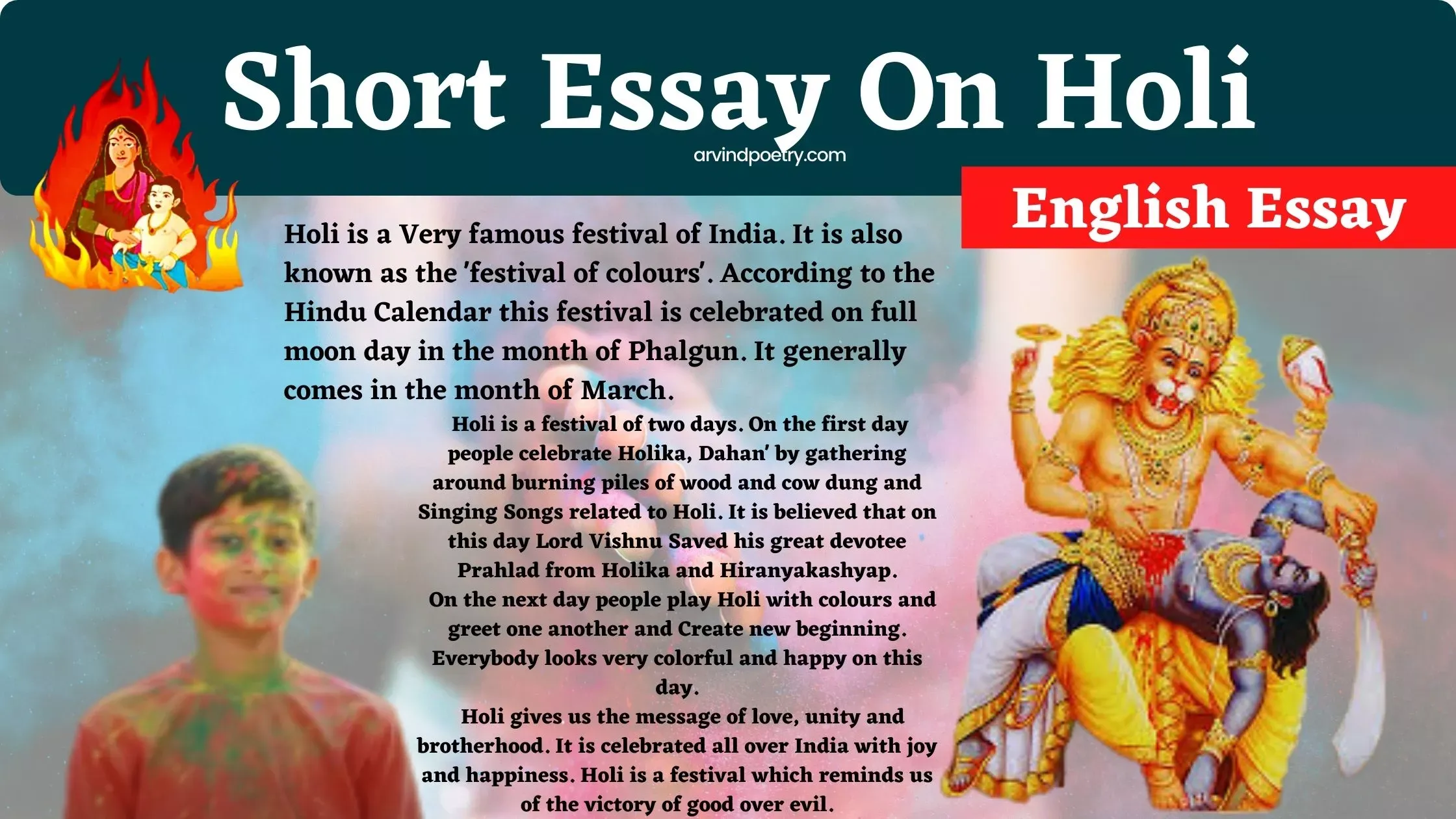Essay on Holi: A Colorful Celebration of Joy and Unity

Holi, also known as the Festival of Colors, is one of the most vibrant and joyous festivals celebrated in India. This ancient Hindu festival holds great cultural and religious significance and is observed with enthusiasm and fervor throughout the country. Holi marks the arrival of spring and the triumph of good over evil, making it a time for people to come together, forget their differences, and celebrate with exuberance. This essay will delve into the history, traditions, and significance of Holi, shedding light on why it is cherished by millions.
Section 1: Historical Origins
Holi has its roots in Hindu mythology and is associated with various legends. One popular legend revolves around the demon king Hiranyakashipu and his son Prahlada. Hiranyakashipu, an arrogant and tyrannical ruler, wanted everyone to worship him as a god. However, Prahlada remained devoted to Lord Vishnu, which enraged his father. Hiranyakashipu’s sister, Holika, who was immune to fire, conspired to kill Prahlada by sitting with him in a bonfire. But to everyone’s surprise, Prahlada emerged unscathed while Holika perished. This event symbolizes the victory of good over evil and forms the basis of the Holi festival.
Section 2: Rituals and Traditions
Holi is a two-day festival that begins on the evening of the full moon in the Hindu month of Phalguna. The first day, known as Holika Dahan or Chhoti Holi, involves lighting bonfires to commemorate the burning of Holika. People gather around these bonfires, sing religious hymns, and perform rituals to seek blessings for prosperity and well-being. The second day is called Rangwali Holi, which is the main day of celebration. On this day, people come together to play with colors, water guns, and water balloons. They smear each other’s faces with vibrant powdered colors and drench one another in colored water. This playful atmosphere fosters a sense of unity and camaraderie among people of all ages and backgrounds.
Section 3: Social Significance
Holi is not just a festival of colors; it also holds immense social significance. It breaks down barriers of caste, creed, and social status, promoting inclusivity and equality. During Holi, people forget their differences and come together to celebrate as one community. The festival encourages forgiveness and reconciliation, as people exchange sweets and embrace each other, burying any past grievances. Holi serves as a reminder that life is too short to hold grudges and that love and harmony should prevail.
Section 4: Cultural Impact
Holi has transcended its religious boundaries and gained popularity worldwide for its exuberance and vibrancy. In recent years, the festival has been celebrated in various parts of the world, attracting people from different cultures and backgrounds. The colorful nature of Holi has inspired numerous events and festivals globally, promoting diversity and cultural exchange. These celebrations not only showcase the rich cultural heritage of India but also foster a sense of unity among people from different walks of life.
Conclusion:
Holi is a festival that encapsulates the essence of joy, unity, and cultural diversity. It brings people together, breaking down barriers and fostering a sense of togetherness. The festival’s historical origins, rituals, and social significance make it an integral part of Indian culture. As Holi continues to gain global recognition, it serves as a testament to the power of celebration in promoting harmony and understanding among diverse communities. So, let us immerse ourselves in the vibrant colors of Holi and embrace the spirit of love and unity it represents.


